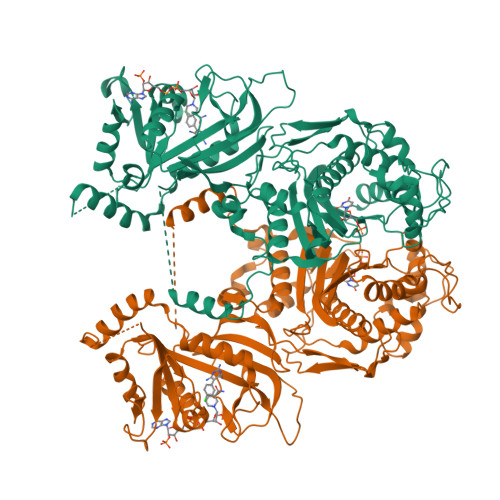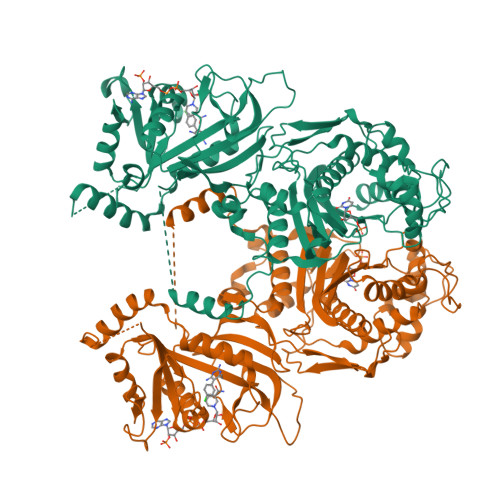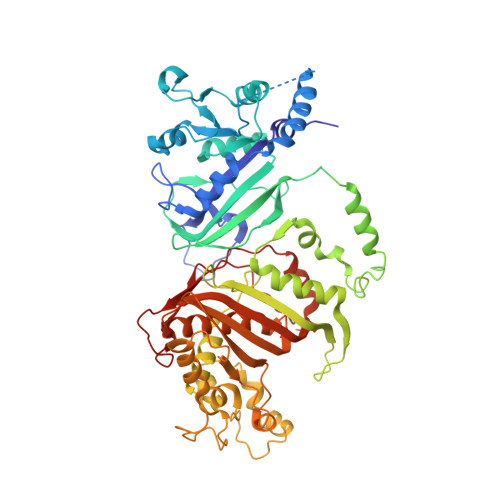Combined Spatial Limitation around Residues 16 and 108 of Plasmodium falciparum Dihydrofolate Reductase Explains Resistance to Cycloguanil.
Vanichtanankul, J., Taweechai, S., Uttamapinant, C., Chitnumsub, P., Vilaivan, T., Yuthavong, Y., Kamchonwongpaisan, S.(2012) Antimicrob Agents Chemother 56: 3928-3935
- PubMed: 22526319
- DOI: https://doi.org/10.1128/AAC.00301-12
- Primary Citation of Related Structures:
3UM5, 3UM6, 3UM8 - PubMed Abstract:
Natural mutations of Plasmodium falciparum dihydrofolate reductase (PfDHFR) at A16V and S108T specifically confer resistance to cycloguanil (CYC) but not to pyrimethamine (PYR). In order to understand the nature of CYC resistance, the effects of various mutations at A16 on substrate and inhibitor binding were examined. Three series of mutations at A16 with or without the S108T/N mutation were generated. Only three mutants with small side chains at residue 16 (G, C, and S) were viable from bacterial complementation assay in the S108 series, whereas these three and an additional four mutants (T, V, M, and I) with slightly larger side chains were viable with simultaneous S108T mutation. Among these combinations, the A16V+S108T mutant was the most CYC resistant, and all of the S108T series ranged from being highly to moderately sensitive to PYR. In the S108N series, a strict requirement for alanine was observed at position 16. Crystal structure analyses reveal that in PfDHFR-TS variant T9/94 (A16V+S108T) complexed with CYC, the ligand has substantial steric conflicts with the side chains of both A16V and S108T, whereas in the complex with PYR, the ligand only showed mild conflict with S108T. CYC analogs designed to avoid such conflicts improved the binding affinity of the mutant enzymes. These results show that there is greater spatial limitation around the S108T/N residue when combined with the limitation imposed by A16V. The limitation of mutation of this series provides opportunities for drug design and development against antifolate-resistant malaria.
Organizational Affiliation:
National Centre for Genetic Engineering and Biotechnology, National Science and Technology Development Agency, Klong Luang, Pathumthani, Thailand.



















